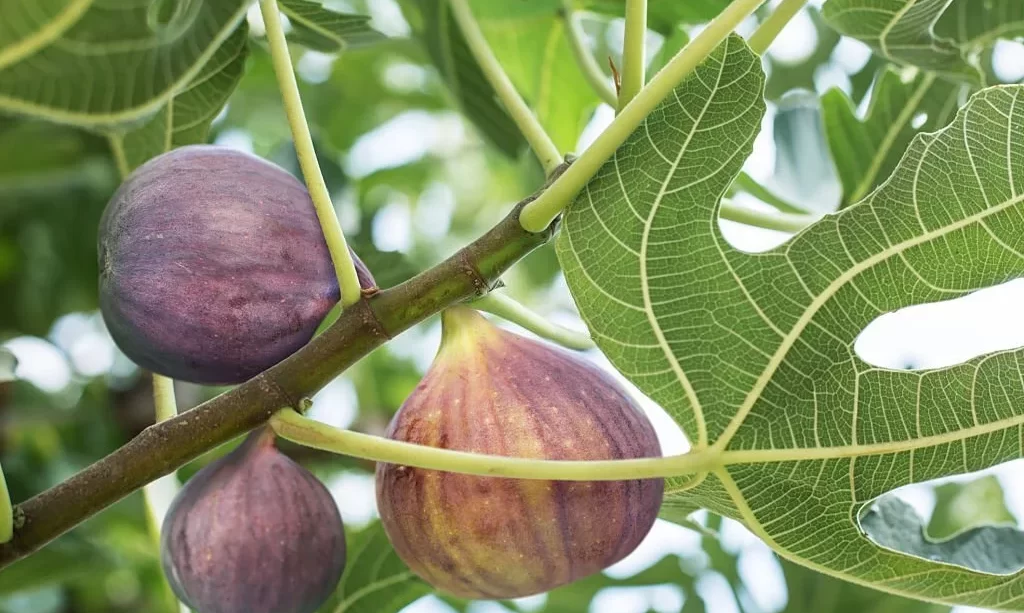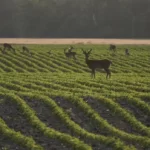Fig trees, with their lush foliage and delectable fruits, have long held a place of reverence in horticulture and culinary traditions. These remarkable trees have captured the imaginations of growers and food enthusiasts alike. One of the mysteries that surround them is the question of how long fig trees can truly live. Fig trees are not just fruit-bearing wonders but also bearers of history and culture, making their lifespan a topic of fascination.
In this article, we embark on a journey to uncover the secrets of fig tree longevity. We’ll explore the typical lifespan of fig trees and delve into the factors that influence their remarkable endurance. Understanding the lifespan of fig trees is not only a matter of curiosity but also a key to preserving and nurturing these cherished trees for generations to come.
- Fruit Tree
- 4 Rooted Fig Chicago Hardy plants
- Starter live plants
Fig Tree Lifespan
Fig trees are known for their ability to stand the test of time. Under the right conditions and with proper care, fig trees can live for several decades and, in some cases, even centuries. These venerable trees have been known to thrive in a wide range of climates and soils, contributing to their longevity.
The typical lifespan of a fig tree can vary depending on several factors, including the fig variety, local climate, soil quality, and the level of care it receives. In regions with favorable conditions, a fig tree can live for 50 to 100 years or more. However, some fig trees, particularly those in exceptional circumstances, have been documented to live for several centuries.
Fig trees are known for their resilience and adaptability, which are essential factors in their extended lifespan. They can withstand drought conditions, thrive in hot summers, and even recover from cold winters, making them a testament to nature’s tenacity.
The ability of fig trees to produce fruit continuously throughout their lifespan adds to their allure. This makes them not only a striking addition to landscapes but also a valuable source of delicious and nutritious figs year after year. However, to unlock the full potential of fig tree longevity, it’s essential to understand the factors that affect their lifespan and provide them with the care they deserve.
Factors Affecting Fig Tree Longevity
The longevity of a fig tree can be influenced by a multitude of factors. Here, we explore some of the key elements that affect the lifespan of these remarkable trees:
- Climate: Fig trees are remarkably adaptable and can thrive in a range of climates, but extreme conditions can stress the tree and reduce its lifespan. Mild, Mediterranean-like climates are ideal for fig trees, but they can also grow well in temperate regions with adequate protection during harsh winters.
- Soil Quality: The type and quality of soil in which a fig tree is planted play a significant role in its lifespan. Well-draining soil with good nutrient content is essential for healthy fig trees. Soil pH should ideally be slightly acidic to neutral.
- Pruning: Proper pruning practices can significantly impact the longevity of a fig tree. Pruning helps maintain the tree’s shape, remove dead or diseased branches, and improve air circulation. Neglecting pruning or excessive pruning can harm the tree’s health.
- Pest and Disease Control: Fig trees are susceptible to various pests and diseases, which, if left unchecked, can shorten their lifespan. Regular inspection and prompt treatment of any issues are crucial to preserving the tree’s health.
- Watering: Proper watering is essential for fig trees. Overwatering or inconsistent watering can lead to root rot and other problems, while drought stress can weaken the tree. Finding the right balance is critical for its longevity.
- Down to Earth Fruit Tree is a five pound box of all natural fertilizer with 6-2-4 formula and is listed by the Organic Materials Review Institute (OMRI) for use in organic production
- Specially formulated to encourage productive home orchards full of the delicious and nutritious tree fruits now popular in many backyard gardens
- Fruit Tree fertilizer provides primary nutrients for plant growth plus added calcium for proper fruit development, so you can enjoy bountiful crops of home grown fruit
- From apples, pears and plums to mangos, pomegranates and figs, Fruit Tree can be used on all varieties of fruiting canes, shrubs and trees
- Ingredients: Feather Meal, Fish Bone Meal, Calcium Carbonate, Langbeinite, Potassium Sulfate, Alfalfa Meal and Kelp Meal
Signs of an Aging Fig Tree
Recognizing the signs of an aging fig tree is vital to gauge its health and take appropriate action. Here are some common indicators that a fig tree may be aging or in decline:
- Reduced Fruit Production: An aging fig tree may produce fewer fruits or smaller-sized figs compared to its prime years.
- Stunted Growth: The tree may exhibit slower growth, and new branches may be thinner and less vigorous.
- Disease Susceptibility: Older fig trees can become more vulnerable to diseases and pests, making them prone to health issues.
- Bark and Branch Damage: Older trees may show signs of bark damage, cracks, or weakened branches that are more susceptible to breakage.
- Decline in Foliage: A reduction in the tree’s leaf density and overall vitality can be a sign of aging.
Extending the Lifespan of Fig Trees
To extend the lifespan of your fig tree and ensure it remains healthy and productive, consider the following measures:
- Proper Pruning: Regularly prune your fig tree to remove dead or diseased branches and maintain its shape. Avoid excessive pruning, which can stress the tree.
- Adequate Watering: Provide consistent and appropriate watering, especially during dry periods. Avoid overwatering, which can lead to root issues.
- Fertilization: Apply a balanced fertilizer in the spring to provide essential nutrients. Follow recommended fertilization practices for your specific soil and tree needs.
- Pest and Disease Management: Monitor your fig tree for signs of pests or diseases and take prompt action to address any issues. Regularly inspect leaves, fruit, and branches.
- Winter Protection: In regions with harsh winters, protect your fig tree from extreme cold by wrapping it in burlap or providing a winter shelter.
By implementing these practices and nurturing your fig tree with care, you can enhance its lifespan and enjoy the beauty, shade, and delicious fruit it provides for many years to come.
- SIZE: You will get 2 rolls of tree protection wrap, each roll is about 65 feet long and 4.7 inches wide. Sufficient length to protect your trees, and plant wraps can be cut for multi-tree protection.
- MATERIAL: Our tree wraps to protect bark are made of high quality non-woven fabric, it has good warmth and moisturizing properties to help plants resist the cold, while the plant protection cloth’s breathability allows your trees to breathe freely.
- FUNCTION: Deer tree protector helps trees to resist cold and frost damage in winter, prevent trees from being exposed to high intensity sunlight and let the trees grow healthily.
- APPLICATION: Tree protectors from deer are suitable for all kinds of fruit trees, shrubs, landscape trees, garden ornamental trees, can also be used for nutrient protection during plant transplanting.
- EASY TO USE: Simply fix the wrap at the bottom of the tree, then spiral up and around the tree, and reach the appropriate height and secure the upper end with a rope to easily complete the tree protection.
Nurturing Fig Trees for Generations
Fig trees have a unique ability to connect generations. They often become family heirlooms, passed down from one generation to the next. To ensure that your fig tree remains a cherished part of your family’s legacy, consider the following:
- Educate and Share Knowledge: Pass on your fig tree knowledge to the younger members of your family. Teach them about the care and history of the tree, instilling a sense of responsibility and connection.
- Propagation: Fig trees can be propagated through cuttings, making it possible to share the same tree across generations. This process ensures that the legacy of your fig tree lives on even if the original tree eventually ages.
- Record Keeping: Maintain records of your fig tree’s care, including pruning schedules, fertilization routines, and any notable events or observations. These records can serve as a valuable resource for future caregivers.
- Preservation: If your fig tree is aging and you wish to preserve its genetic material, consider grafting or taking cuttings to propagate new trees. This way, you can perpetuate the essence of your beloved tree.
Conclusion
Fig trees are not merely trees; they are living connections to the past and bridges to the future. Their remarkable longevity and the ability to bear fruit for many years make them a treasure in gardens and hearts alike. Understanding the factors influencing fig tree longevity and providing them with proper care can ensure that these venerable trees continue to grace our landscapes and offer their sweet bounty for generations to come.
Whether you are the steward of a young fig tree with the promise of decades ahead or the caretaker of a centuries-old fig tree, your efforts to nurture and protect these trees contribute to a rich tapestry of natural heritage. Through education, care, and the passing down of knowledge, fig trees can become enduring symbols of family, tradition, and the timeless beauty of the natural world.






